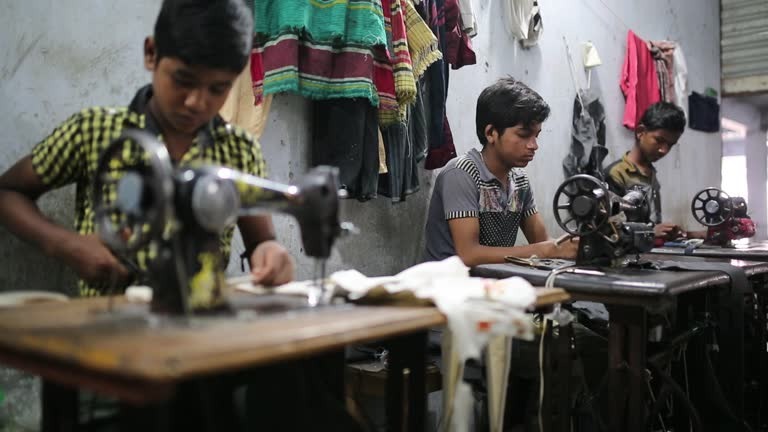GST Misclassification in the Textile Industry: A Complex Web of Taxation and Compliance
LATEST NEWS
3/15/20253 min read


GST Misclassification in the Textile Industry: A Complicated Labyrinth of Taxation and ComplianceThe textile sector in India was able to contribute to one of the largest foreign exchange earners for India, and it has been through the journey of the Goods and Services Tax, since its inception in 2017, full of various kinds of pitfalls. Over the past few days, CGST has launched investigations against several textile manufacturing factories within India and outside India for reportedly being involved in the misclassification of textile processing activities, which might have led to huge tax avoidance.
The article discusses the multilayered nature of GST concerning the textile sector, and the challenges faced by the producers, and it shall certainly throw some wider consequences upon the industry as well. An Overview of GST and the Textile Sector. It has revolutionized in the sense of integrating the entire array of indirect taxes excise duty, VAT, and entry taxes into a single structure of tax normally defined as GST, thus bringing glory to the Indian taxation system. As far as GST varies from one product to another within the textile industry, it has several applications. For instance, apparel, if priced below ₹1,000, is taxed at 5%, whereas apparel above ₹1,000 shall attract 12% tax. Textile materials, such as cotton and silk yarn, are generally taxed at 5%.
Misinterpretation in the Textile Rendering Processes
Certain textile processing activities have been misclassified. The investigations done recently by CGST officials show upon the surface that there is a basic structural problem within the industry: the misclassification of textile processing activities. A number of manufacturers are reporting that they undertake processes that tremendously affect the fabric, such as bleaching and printing, and calling it nothing but work for cleansing and dyeing; while job work services charge a GST of only 5%. However, basic processes that do alter the essential features of fabric, the process should ideally attract a whopping GST of 18%.
Ambiguities in tax slabs and definitions.
These ambiguities in different GST slabs or definitions are cited by tax experts as the basic cause for misclassification. The confusion among the manufacturers regarding different GST rates and the foreseen opportunities for misuse allow for an opening to intentionally or less-or even not-at-all deliberately qualify these transformative processes under the lower tax category. Even the large companies have been found involved in such inquiries not exclusively belonging to the small or medium-sized enterprises; it is the tax shortfall that runs into hundreds of crores due to misclassification of the services. This does not only cripple the government's revenue table but also creates a skewed field of operations for businesses wherein the non-defouthold firms seem to be bred with lower operational costs.
Proposals for change.
Possibly what could happen in the coming time is to change the GST rate slightly upwards for certain types of textile processing activities. During the 45th GST Council meeting, a proposal to raise the GST rate on dyeing and printing services from 5% to 12% was taken up but not implemented. The proposed changes could also clarify the tax structure and reduce misclassifications; however, there needs to be a great deal of caution taken so that no unpleasant impact is created onto the industry.
GST and the Textile Industry: Challenges and Opportunities
Despite the challenges, GST has offered multiple advantages to the textile industry. With the amalgamation of various indirect taxes, the burden of manufacturing costs and compliance from the perspective of textile traders reduced considerably. This helped in carrying out operations smoothly and efficiently, which contributed to an upturn in textile exports. Impacts on small and unorganized sectors. On the contrary, the introduction of GST was not wholly beneficial. In fact, small- and medium-sized mills, handlooms, and handicrafts -this unorganized sector that fails to meet the GST requirements- is still struggling with the denial of ITC and higher compliance requirements. In turn, this bolstered an already-model-organized sector, capable of complying at a far cheaper price.
Conclusion
For quite some time now, the textile processing activities coming under the ambit of wrong classification under GST have demanded a definition of parameters and better tax slabs to prevent tax evasion and ensure parity in competition amidst the sector. As it develops further, the textile sector has to solve these problems if compliance is to be attained and growth promoted. Effective clarification of the GST provisions and incentivization for compliance by the government will be the significant factor in determining the future of this all-important sector. Meta description: Unearth the complications of GST introduced in the textile industry by the government of India, which probes into tax avoidance through the indexing of textile processing activities. Understand how GST affects the industry and what steps are needed to ensure compliance and fairness.
